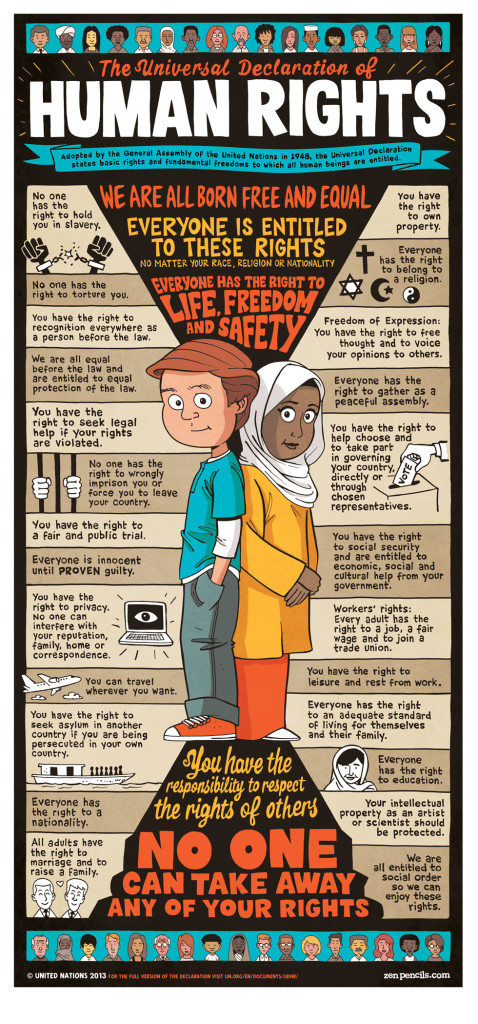In summer of 2015 I had the honor of participating in the Centropa Summer Academy (CSA) in Vienna, Austria and Sarajevo, Bosnia. It was an incredible and life changing experience. Centropa was founded on the belief that “stories are universal” and uses interviews and family photos to create biographical films which teach powerful lessons about Jewish history in the 1900s. Ed Serotta, the founder of Centropa, believes that “no one can teach a teacher better than another teacher” and the CSA is rooted in this belief. One of the Academy’s focal points was on our responsibility to assure that we all live in a Civil Society.
The winning video from JDS students.
After the training, I was inspired to create a unit that would help teach my eighth graders about their responsibility towards others. I decided to use the Centropa film “Survival in Sarajevo” and the UN Universal Declaration of Human Rights for this unit. The film tells the story of how the Jewish Benevolent Association at the Sephardic synagogue in Sarajevo helped keep alive Jews, Bosniaks, Croats and Serbs who chose to stay in the city during the siege in the 1990s. The story exemplifies how individuals can help to create, support and provide “civil society” when the government cannot.
We first watched and discussed the film, and I introduced the term “civil society.” The class then worked on defining what this term means. We determined it is not a utopia, but rather a place where each person’s rights are protected and everyone is treated equally. To define what rights those might be, we then read the UN Declaration in its entirety and discussed each right listed therein. Many articles surprised the students, either because they knew this wasn’t happening, or they couldn’t understand why concepts they considered a “given” needed to be written down. Students then selected one of three rights that the majority felt were not being “upheld” and, in groups, researched organizations that work to provide this right for individuals. The three rights they selected were related to slavery, universal access to elementary education and security of person.

Next, each group was tasked with making a video to teach about the article they selected and an organization that was addressing the issue they identified, the organization they found that was addressing the problem how that organization helped, and, finally, what the world would look like if this problem was solved. The “security of person” group determined that homeless people did not have security – they lack shelter, knowing where their next meal will come from and protection from attack or the elements. After some online research, the students selected Jewish Family Service as a local organization working to help provide security to this vulnerable population. Their video lists the many ways that JFS helps vulnerable populations – not just the homeless – and how JFS accomplishes its work.
At the end of this lesson the students were asked to reflect on “whose responsibility is it to provide for and assure that we live in a civil society?” They were able to answer “everyone’s” after their work in this unit. At JDS, our mission statement includes the goal of creating “Upstanders” – individuals who take action. As the teacher who introduced this term to JDS nine years ago, I take particular interest in the fulfillment of this part of our Mission Statement. This unit, and the model of JFS, help the students to see their role as engaged citizens. As young Jews who have recently celebrated their b’nai mitzvah and are “Jewish adults”, eighth grade is the perfect year for making sure that the lessons of their overall JDS education have taken root and that they will continue to be engaged and caring citizens well past their graduation.
 By Nance Morris Adler
By Nance Morris Adler
Nance Morris Adler is the Middle School Judaics teacher at the Jewish Day School of Metropolitan Seattle; she is in her eleventh year of teaching at JDS. She won The Milton Wolf Prize for Teachers for this lesson. She lives in North Seattle with her husband and loves reading, photography and music.



